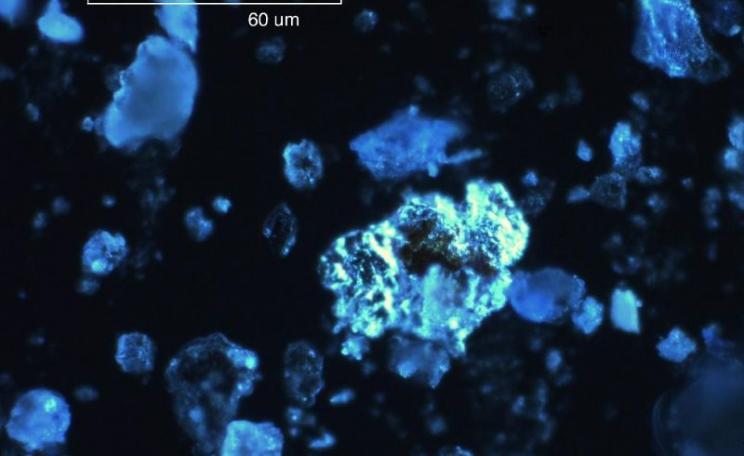Of course, we are all - to a greater or lesser extent - nuclear bomb test veterans.
In 2004 I began to help as an expert on Pensions Appeals cases for Atomic Test veterans and sadly often their widows. These were all successful.
The evidence I presented, showing that the ICRP radiation risk model was unsafe, proved decisive in gaining pensions for these cancer-suffering veterans, or their widows following their husbands' deaths from cancer or leukemia.
Because of this breakthrough (for the veterans, who had previously lost every case), in 2006, I was invited to Blackpool to speak to the British Nuclear Test Veterans Association (BNTVA).
I took my daughter Rosa (then 12) who got to clasp the very thumb which pressed the red button on the Valiant bomber and dropped the big megaton affair at Christmas Island.
What emerged was that there were serious concerns about the health of the veterans' children. It appeared there were too many congenital illnesses and odd birth defects around.
I suggested a study similar to the one I had designed and carried out the previous year for the Porton Down chemical warfare veterans, and the BNTVA agreed.
The resulting study of the nuclear test veteran children and grandchildren (which I co-authored with Mireille de Messieres) is published in the peer-reviewed journal Epidemiology Open Access this week: 'Miscarriages and Congenital Conditions in Offspring of Veterans of the British Nuclear Atmospheric Test Programme'.
The study method
The National Radiological Protection Board had carried out studies of the veterans themselves in 1988 and then two follow-ups. Initial results showed an excess of leukemia, reversed in a later version.
Other studies of Australian and New Zealand veterans showed bigger cancer effects (controls were less exposed to fallout in the S hemisphere) but no one looked at offspring.
Then in 1998 a questionnaire study of the health of the BNTVA by Sue Rabbitt Roff of Dundee University was funded by the novelist Catherine Cookson. In 1999 results were published in her book Medicine, Conflict and Survival but there were no real quantitative comparisons given and so it was difficult to draw any numerical conclusions about the issue of genetic effects.
Our Porton Down method obtained controls by asking each veteran who filled out a questionnaire to enroll a man of roughly the same age from a list of friend, in-law, work colleague, etc., someone not at the test sites.
The questionnaire itself asked for details of miscarriages, stillbirths, early mortality, birth defects, later congenital conditions and cancer in both the children and grandchildren.
Of course, we are all - to a greater or lesser extent - nuclear bomb test veterans.
It also went into details of which test site they were stationed at, whether they had film badge dosimeters, any subsequent immediate health effects, whether the mother smoked. So a whole range of questions were answered by the veterans (or widows on their behalf) and the controls.
Using controls it is possible to examine incidence of events like miscarriages which have no established national rate that can be used to test for the existence of a real and statistically significant effect. And in epidemiology, it is generally accepted that case-control methods are more valuable than just making comparisons with national data.
However, for the congenital diseases we also checked the results by comparing the rates of congenital illnesses with national data from English EUROCAT registries. This provided a check on whether the controls that were obtained were unbiased. They were.
Miscarriages, sick children and also grandchildren
The BNTVA began in 1983. These were National Servicemen at the time of the tests, between 1952-62. By the time of our study in 2007 they were elderly and many had died.
The questionnaires went out to 1,000 addresses, although the BNTVA secretariat said that many of these, perhaps half, were no longer valid because of moving or because they had died.
We obtained results for 605 veteran children and 749 veteran grandchildren, and as controls we had 311 children and 408 grandchildren.
The our task was to determine the rate of incidence of different events or conditions in each group, and compare the two to produce the so-called the Odds Ratio (OR).
The first discovery was that there was almost three times the miscarriage rate among veterans. Veteran's wives expererienced 105 miscarriages, against 18 in control wives, yielding an OR of 2.8. which is to say, that a veteran's wife was 2.8 times more likely to experience miscarriage.
For perinatal mortality (stillbirths plus early infant deaths) the OR was 4.3. For congenital malformations in the children the OR was a massive 9.8 - based on 57 children with congenital illness versus 3 controls.
But here is the most interesting and perhaps surprising result: the effect persisted into the next generation, affecting veteran's grandchildren. The OR for congenital malformations was almost the same as for the children at 8.4.
Just to be clear: bomb test veterans' children were 8.4 times more likely to have children with congenital malformations than the controls. Checking these numbers against the English data in EUROCAT gave the same result. Both the veterans' children and their grandchildren had almost ten times the levels of congenital damage, as the controls.
These results were all highly statistically significant, but for the congenital diseases the p-values were all less than 0.0001 - which means that the probability of such a result being a chance finding is vanishingly small.
We also looked at cancer, and found a modest excess risk in the children and also the grandchildren, with more leukemia and lymphoma cases, but the effects were statistically marginal owing to the small numbers.
Genomic Instability
So what do these results mean? We state in the paper and wrote to the editor in response to a referee:
"The only thing that the test veterans had in common was their presence at the test sites. There were no known pre-existing genotoxic agents shared by Maralinga in Australia and Christmas Island in the Pacific. Genetic damage is not laterally transmissible (you can't catch it). Many of the veterans with sick offspring were present at the test sites between detonations. Their wives did not smoke. If they had dosimeters, the radiation doses were less than UK background.
"Therefore the only possible (Sherlock Holmes) cause was something at the sites associated with nuclear tests which caused genetic or (as you will see below) genomic damage. This can only be fallout and rainout of the alpha emitters Plutonium and Uranium.
So far all we are saying is that the fallout caused the congenital damage. But there is more. Why the same high rates in the grandchildren? Mendelian genetic damage (specific gene changes) should reduce rapidly because the genetic makeup of damaged offspring is diluted at every generation by a factor of about two. Remember Mendel's peas?
For the answer we look to Chernobyl. After Chernobyl, research into radiation effects turned up a new phenomenon, Genomic Instability. If a cell was damaged, it somehow switched on a mechanism that communicated to its descendants a signal to randomly mutate.
See for example the paper 'Transgenerational genomic instability in children of irradiated parents as a result of the Chernobyl Nuclear Accident' by Anna Aghajanyan.
Not only that: it also transmitted the same signal to other cells around it, and indeed in some animal studies by Carmel Mothershill and Colin Seymour of McMaster University, to other individuals - remarkable but true.
This effect has been seen now in many systems and the trans-generational genomic damage switch has been shown to operate in Chernobyl studies where in some rodents (bank voles) there are measurable effects even after 20 generations. This is scary stuff indeed.
No one knows the reason for such a process but it has been suggested that it favours the survival of a population at the expense of the individual. The genes scramble themselves around a genetic stress so the chance of one particular overall mutation bypassing the stressor is increased.
We are all test veterans
Of course, we are all - to a greater or lesser extent - nuclear bomb test veterans. The fallout and rainout in the period of the tests, especially 1959 to 1963 increased Strontium-90 levels in childrens' bones and teeth: this is all published and documented in Wings of Death (1995), and the UNSCEAR 2000 report.
All the effects observed in our Test Veterans paper were present in everyone, but to a lesser extent. There were unexplained increases in infant mortality and congenital malformations. The effect was blamed on Thalidomide, but a Canadian study shows correlation with fallout. There was also the cancer epidemic which began in areas of high rainfall like Wales.
What the present paper shows clearly is that these effects
- are real;
- are a consequence of exposure to the DNA seeking internal radionuclides like the alpha emitter Uranium; and
- that since all three Japanese exposure groups suffered the same internal exposures, the ICRP radiation risk model is dangerously wrong.
Our findings add to the growing body of evidence supporting calls for an immediate halt to all releases of radioactivity from energy reactors like Hinkley Point, with their local breast cancer and leukemia clusters, to the Uranium killing fields of Iraq.
The ICRP model has - through the nuclear activities it has been used to justify - killed, and is killing, and will kill the people it is supposed to protect. As I point out in a recent peer reviewed article in IntechOpen, it must be urgently reviewed.
The paper: 'Miscarriages and Congenital Conditions in Offspring of Veterans of the British Nuclear Atmospheric Test Programme' is published in Epidemiology Open Access.
Note: owing to an apparent technical fault the full paper has been sporadically unavailable. A PDF is also available here.
Chris Busby is the Scientific Secretary of the European Committee on Radiation Risk. For details and current CV see chrisbusbyexposed.org. For accounts of his work see greenaudit.org, llrc.org and nuclearjustice.org.
He is also the author of Uranium and Health - The Health Effects of Exposure to Uranium and Uranium Weapons Fallout. Documents of the ECRR 2010 No 2, Brussels, 2010.






